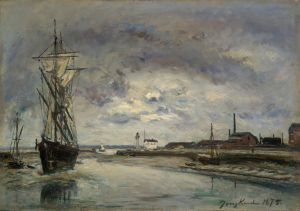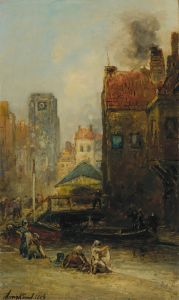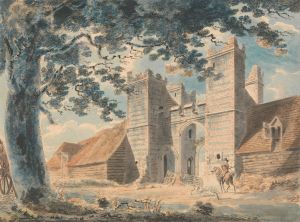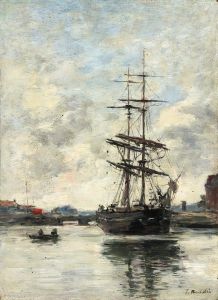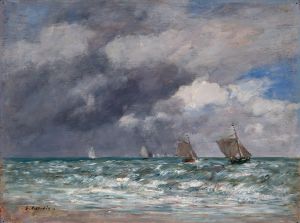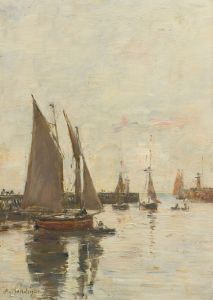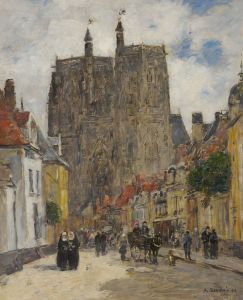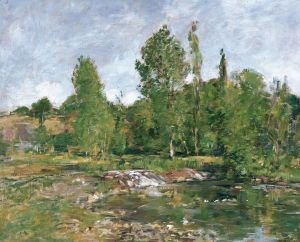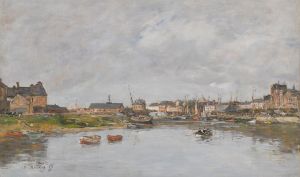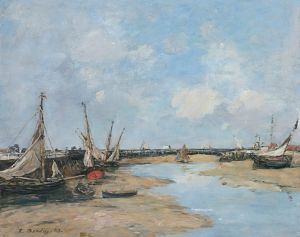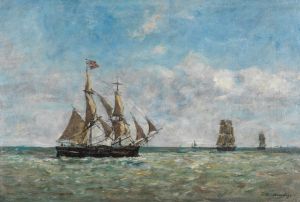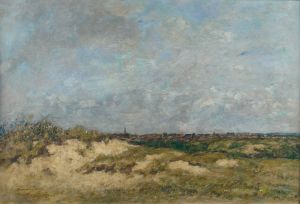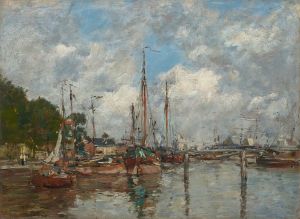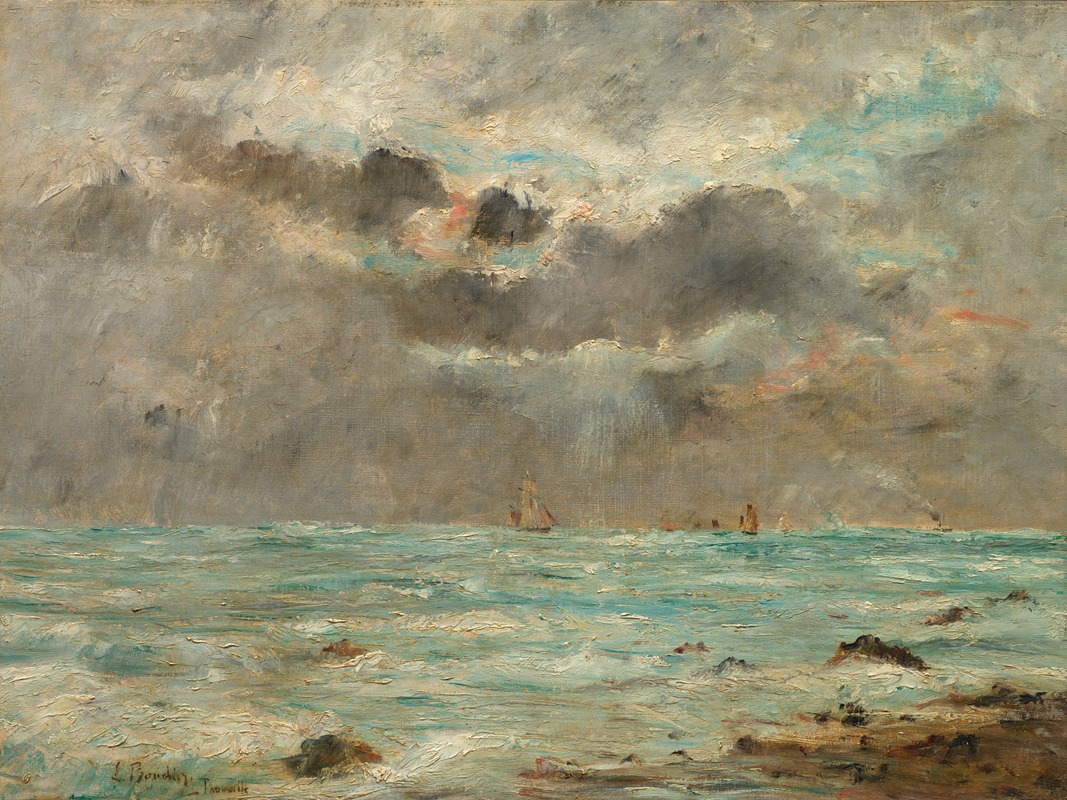
The Coast at Trouville
A hand-painted replica of Eugène Boudin’s masterpiece The Coast at Trouville, meticulously crafted by professional artists to capture the true essence of the original. Each piece is created with museum-quality canvas and rare mineral pigments, carefully painted by experienced artists with delicate brushstrokes and rich, layered colors to perfectly recreate the texture of the original artwork. Unlike machine-printed reproductions, this hand-painted version brings the painting to life, infused with the artist’s emotions and skill in every stroke. Whether for personal collection or home decoration, it instantly elevates the artistic atmosphere of any space.
The Coast at Trouville is a painting by the French artist Eugène Boudin, who is widely regarded as one of the precursors of Impressionism. Boudin, born in 1824 in Honfleur, France, was known for his depictions of coastal scenes, particularly those featuring beaches, skies, and the interplay of light and atmosphere. This painting, like many of his works, reflects his fascination with the seaside and his ability to capture the transient effects of light and weather.
The artwork portrays the coastline of Trouville-sur-Mer, a popular seaside resort in Normandy, France. Trouville was a favored destination for the French bourgeoisie during the 19th century, and its beaches became a frequent subject in Boudin's oeuvre. In The Coast at Trouville, Boudin captures the essence of the location with a focus on the natural beauty of the shore, the expansive sky, and the dynamic interaction between land, sea, and air. His use of loose brushstrokes and a light, airy palette exemplifies his skill in rendering atmospheric effects, a hallmark of his style.
Boudin's work is often associated with plein air painting, a technique that involves painting outdoors to directly observe and depict the natural environment. This approach allowed him to study the changing conditions of light and weather, which are evident in The Coast at Trouville. The painting demonstrates his ability to convey a sense of immediacy and realism, qualities that influenced later Impressionist painters, including Claude Monet, who admired Boudin's work and considered him a mentor.
The exact date of creation for The Coast at Trouville is not definitively documented, but it is consistent with Boudin's prolific output of coastal scenes during the mid-to-late 19th century. His works from this period often feature similar themes and stylistic elements, emphasizing his deep connection to the Normandy coastline.
Today, Eugène Boudin's paintings, including The Coast at Trouville, are celebrated for their role in the development of modern landscape painting. His ability to capture the fleeting effects of light and atmosphere paved the way for the Impressionist movement, making him a significant figure in the history of art. The painting is held in a private collection or museum, though specific details about its current location may vary depending on the source.





